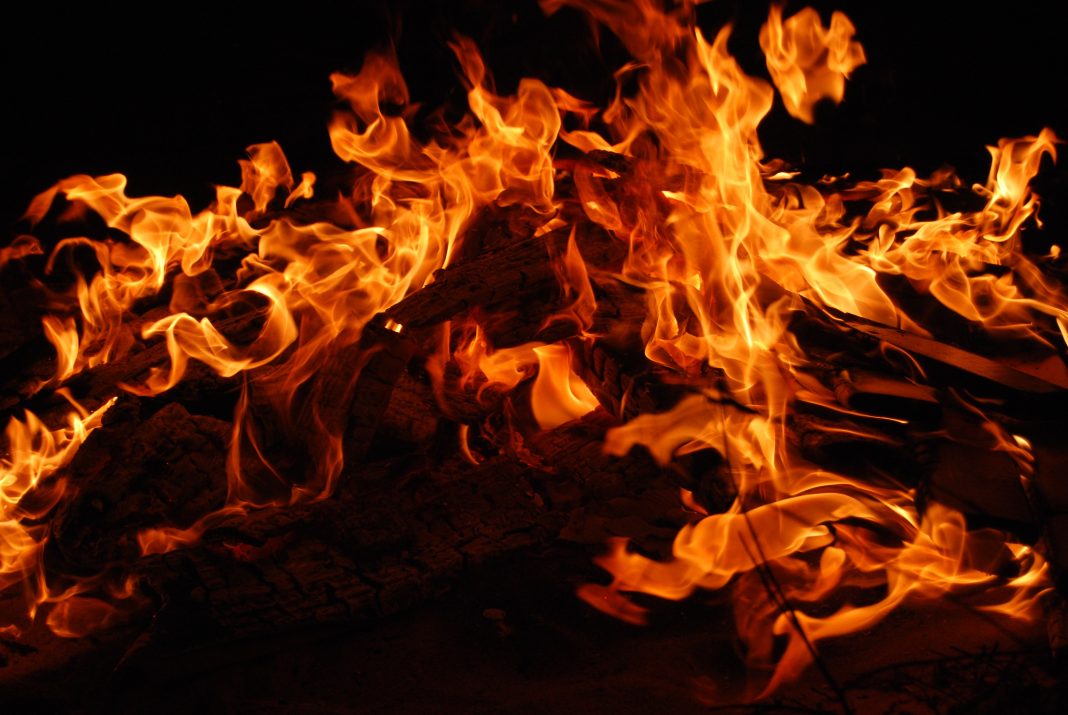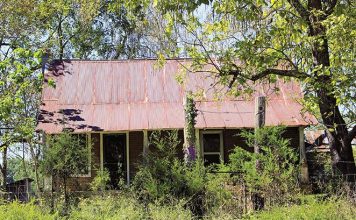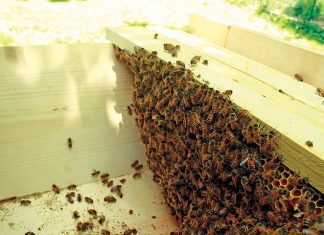 |
|
| Issue #105 • May/June, 2007 |
Do you realize there is an entire field of woodstoves that the general public rarely hears about, even though there are specialty woodstove stores in every town and woodstove displays in most hardware and building supply outlets. This is the field of wood-fired hot water boilers, furnaces, or OWHH (Outdoor Wood-fired Hydronic Heaters) that are designed to heat homes and businesses using hot water.
Hot water heating systems using wood as a fuel goes back more than 2,000 years to the Romans, who heated public baths and private villas with water flowing through clay pipes routed over wood-fired furnaces. I have visited these sites and except for using large ceramic-clay pipes instead of steel, they operated very much like a modern hydronic heating system. Of course these ancient hydronic heating systems required lots of unpaid staff to keep the wood fires burning in these dark basements.
|
Anyone who has ever tried to heat a large home with a traditional wood-stove soon learns that it will be hot standing near the stove, while the rest of the house is much cooler. By adding internal fans, some woodstoves have improved this heat distribution, but fans still only move the heated air throughout a room and not necessarily the entire home if there are lots of wall partitions.
Heating houses, schools, and businesses using a hot water boiler is one of the oldest heating system designs in the world. Even today, you can find hot water baseboard radiation, standup hot water radiators, and radiant heat slab floors in many commercial and institutional buildings. Hydronic heating systems are one of the best ways to heat multiple rooms having different temperature setpoints and heating loads at the same time.
Hydronic heating vs forced air heating
Small pipes carrying heated water and a tiny circulating pump can distribute the same amount of heat to multiple spaces that would require a very large system of air ducts and supply fans. By wiring a wall thermostat to a small control valve, each room can have its own heating control without affecting the others, something very difficult to achieve using a single zone central air handling system.
|
There are several technical reasons including condensate drainage off coils that make it difficult to use a hydronic heating system to distribute chilled water for cooling. This is why most homes in locations that require both heating and cooling choose to install a ducted air system connected to a central heat pump or forced air furnace, which saves the cost of installing two separate systems, a hydronic system for heating and a ducted system for cooling.
The recent upsurge in radiant-floor heating systems in upscale homes to provide better comfort and individual heating zone control is bringing back residential hot water heating systems. In addition, an existing residential hot water heating system connected to a central gas or oil-fired boiler is easy to retrofit with a wood-fired hot-water boiler.
Because of the high percentage of homes with forced air heating systems, there are actually more OWHHs installed in forced air systems with a water-to-air heat exchanger than any other type of installation.
Hydronic stove types
Hydronic woodstove systems are very versatile, since you can keep your existing gas or oil-fired boiler and use a wood-fired boiler as either the primary or backup heating source for your home. You can also purchase a free-standing wood-fired boiler that includes all related controls and valves pre-installed in a single freestanding weatherproof enclosure. This type of system is located outside next to your home and uses flexible insulated buried piping to transfer the supply and return hot water to your home’s heating system. Many of these units include their own foundation and are ready to use as soon as they are delivered and the piping connected.
|
These packaged wood-fired hot water boilers are now available to burn waste wood products like old shipping pallets, wood pellets, corn, and coal. Most designs have automatic combustion air controls and only need to be refilled once per day. In the case of pellet and corn furnaces, most have automatic feed mechanisms.
In new home construction, you can buy a wood-fired hot water boiler that includes a secondary burner that allows operating the boiler on gas or oil when you are just too lazy to cut, split, haul, and burn wood.
There are hot water coils designed to fit inside traditional freestanding woodstoves, and hydronic water jackets designed to fit inside a conventional masonry fireplace. Some models of domestic hot water tanks are available with an internal heat exchanger. There are external water-to-water heat exchangers that can be installed with normal existing water heaters. This can be tied into the same hot water heating system which allows the same wood-fired hydronic boiler to heat the domestic hot water in addition to providing space heating.
My hydronic system
I live in the humid southeast and we need both cooling and dehumidification during the entire summer, and this demands a ducted air system. However, we still wanted to heat our three-story solar home with a woodstove located in the basement, so I installed a built-in hydronic water jacket inside a conventional masonry constructed fireplace. The water jacket and heating coils are piped to a hot water coil located in the main return-air duct of our forced-air cooling system. A second hot water coil is located in the supply air duct of the same forced-air system, which is piped to our 65-gallon propane domestic hot water tank.
|
Separate 1/20 HP pumps move hot water from either heating source to their respective heating coil. This allows every room of the house to be heated by air that was either totally heated or preheated using the hydronic jacket in our fireplace. The other coil connected to our propane hot water tank provides heating when we do not want to build a fire. When heating with only wood, we operate just the central fan and the small hot water circulating pump. Even with a three-story home, every room on each level stays almost the same temperature, which is not possible with a standard woodstove.
Hydronic system safety
There are many advantages to heating with hot water, yet some people think of a boiler as more dangerous than other heating systems. The majority of the OWHHs are atmospherically vented and operate as non-pressurized. Yes, if you completely seal up a metal container full of water and heat as hot as possible, something is definitely going to either burst or explode. But the same could be said for a gas or oil furnace that had a fuel leak or a defective burner. Today there are very reliable hot water pressure and temperature relief valves with certification tags indicating they have been tested to activate at the specified temperature or pressure. Today’s pressurized non-vented packaged hydronic woodstoves limit their operating pressures and use these multiple fail-safe control devices.
The valves and pipes of a hydronic heating system
Any knowledgeable hydronic heating system installer, regardless of boiler fuel type, understands the importance of providing properly sized relief valves to protect the boiler and piping when unsafe temperatures and pressures are reached in the case of pressurized systems. However, to avoid discharge from these relief valves every time the hot water in the piping loop expands, an expansion tank is included in the piping loop to absorb this constant expansion and contraction of the water.
Lastly, in the case of pressurized systems, a device called an “auto-fill” valve connects this hydronic boiler to the cold water supply to make up for any water losses at the relief valves or small leaks. This device is usually set from 10 to 12 PSI which keeps the piping loop filled without letting the system operate at high pressure. A back-flow check valve in this makeup water supply line prevents water in the hot water heating loop from being forced back into the cold water line during heat expansion, since these systems usually have antifreeze or corrosion inhibitors in the hot water heating loop.
Power requirements
A major advantage of using a hydronic heating system for rural and off-grid homes, regardless of fuel type, is the low electrical usage required to operate them. Other than a few small zone valves, the only real electricity required is to operate a small circulating pump, which for most systems uses less energy than a 75-watt light bulb. This means a small pocket-sized inverter now available to power small AC entertainment or computer devices in your car and connected to an RV/marine deep-cycle battery would be able to power your entire home heating system during a power outage.
|
A typical ducted heating system and a ½-HP central air-handling unit would require the continuous operation of a medium-sized generator to keep this type of heating system operational during a power outage.
Other system types
I have designed hydronic heating systems that also included a large non-pressured insulated hot water storage tank up to 500 gallons in size. Once the home has reached the desired temperature, the hot water from the hydronic woodstove is diverted to this storage tank to store the excess heat. Later at night or the next day, as the house begins to cool, hot water from the storage tank is diverted to the radiant heating system. This can be a real advantage when you do not feel like keeping a fire going constantly, but this type of system requires a fairly sophisticated control system and additional zone valves.
These piping diagrams are intended to show how a hydronic woodstove can be used with a hot water baseboard or forced-air heating system. They are included to show only general system piping combinations and should not be used for an actual system installation. A qualified installer must design and install the system and verify all safety devices are working properly before building your first fire.
There are several really good brands of hydronic woodstoves on the market that offer many different heating capacities and features to meet almost any space heating application. Always hire a licensed plumbing contractor to complete the piping and verify that all safety devices are working properly.
Hydronic Woodstove Manufacturers:
Central Boiler Inc.
800-248-4681
www.centralboiler.com
HeatMor Corp.
800-834-7552
www.heatmor.com
Harman Stove Company
www.harmanstoves.com
Charmaster Corp.
218-326-6786
www.charmaster.com
Hardy Manufacturing
601-656-5866
www.hardyheater.com
[weaver_widget_area id=’articles_about_yago’ class=’text3′]





















I meant a wood fired heater
I am looking for a good fired heater to heat a hot tub.
I plan to use gravity flow, single pass lake water that will flow thru the heater and into the hot tub. I can also have a mixing valve with an internal thermostat to ensure the water is at a good temperature. I have about 10 ft of elevation change to provide flow. Any suggestions on equipment to purchase?